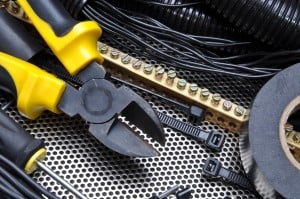Current switches and current transducers are often used in very similar applications. Common applications include: monitoring motor activity, detecting belt slippage or breaking in fan, monitoring for bearing wear in motors and detecting heating element failure or end of life.
Current Switches
Current switches are used when an application needs to signal when the current flow in a system exceeds or drops below a certain value.
For example, applications where a fan is being monitored, belt slippage or a belt break will result in a lower current draw by the motor caused by the reduced mechanical load on the motor. A current switch is used to monitor this current level. A set of contacts will change state from either a closed condition to an open condition or vice versa. This change in contact state will either remove or apply a signal to the system controller signaling the abnormal operation of the monitored motor. Current switches are capable of detecting either a drop or increase in the monitored current and signaling the change in operation.
Current Transducers
Current transducers are used when an application requires information on the amount of current flowing in a system. In the example above where a belt driven fan is being monitored, a current transducer generates a signal showing the current value being consumed by the motor. If the controller has the capability to process the change in motor current, an alert can be sent to maintenance personnel to investigate the cause possibly avoiding a fan failure and an uncomfortably cold or warm environment served by the fan.
The ability of the current transducer to provide a quantitative value for the current draw of a system allows a controller with advanced signaling capabilities to signal an abnormal situation based on smaller changes in current than a current switch can provide.
CLICK HERE to learn more about Setra's current switches and transducers.


